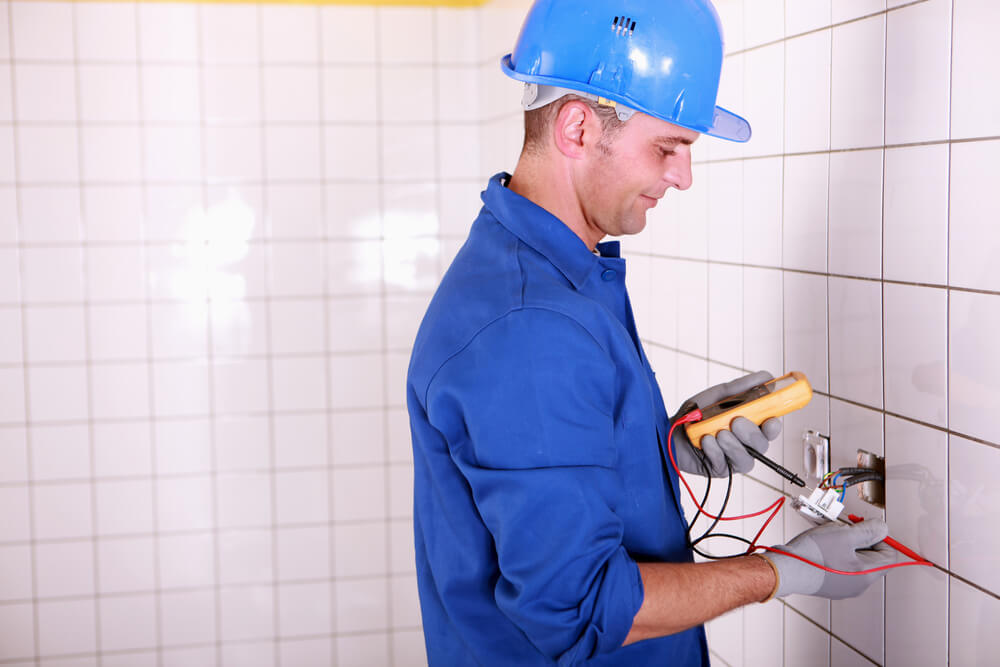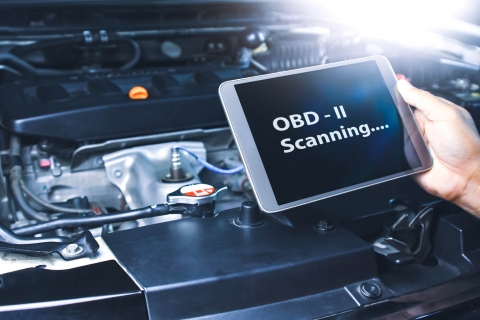Can Bathroom Lights and Receptacles Both Be on the Same Circuit?

If you're like most people, redesigning your home is a dream come true. Of all the rooms we spend our time in, the bathroom is near the top. This explains why so many want to renovate their own. But, there are some immediate issues, and one of them relates to electricity. Bathroom lights and receptacles must wire into the house. Can they both be on the same circuit?
Get Down to Business in the Bathroom
When you think bathrooms, you think water. This is an obvious association, and a correct one. Bathrooms get wet. Less clear: bathrooms also use an enormous amount of electricity. Power and water in the same area can create problems. The combination of water and wiring produces a unique environment. You need lights, air conditioning and ventilation, and safety protocols. Each of these is necessary for a habitable and usable bathroom. Without one, the space is a potential danger zone.
For starters, lighting fixtures in bathrooms are special. Their design is unique, in that it entails being watertight. If they are permeable, the electrics may become compromised when exposed to moisture. This a huge safety hazard and poses health risks. Imagine you are in the shower or tub. Water splashes up onto the light in the ceiling. If you or your electrician has installed the wrong kind of fixture, your immediate safety is at risk. Electric shock, health issues, and even death can result. For this reason, bathroom fixtures carry damp or wet location ratings. If a light’s close enough to water to get wet, it needs a wet rating. Otherwise, it needs damp.
This makes perfect sense so far. It is reasonable that different lighting fixtures are necessary in different areas. If splashing is possible, it is always best to stay on the safe side and use a wet rating. If not, a damp rating should be adequate.
It's Time for the Nitty Gritty
We're about to get a bit technical, so put on your tool belt and strap on your hard hat. Once you've figured out what lights to use and the fixtures involved, you need to wire them into the house. It can be fun, but also tricky. Wiring is serious business. If you don't feel comfortable doing it, you should call a professional electrician to do it for you. If you feel confident and want to throw in a little sweat equity, then get ready to work with some wires.
The most important wiring component in the bathroom is the GFCI. According to OSHA, these are “ground-fault circuit interrupters.” This is fancy talk for an electrical outlet. Their design enables them to “shut off electrical power...within as little as 1/40 of a second.” GFCI outlets, or receptacles, have one job: to keep people in the bathroom safe in the event of a water accident. If liquid touches the electrical outlet while someone is nearby, electrocution could occur. Thus, GFCI receptacles’ presence in the bathroom is vital.
Better Home & Gardens further echoes the main point. Electrical code may vary. Some establish that “bathrooms have their own circuits.” Others may “permit bathrooms to share circuits with receptacles.” This seems tricky. Once you dive a little deeper, though, the answer is clear.
Is the Answer Yes or No?
The answer is...both! That’s right, lghting fixtures and receptacles can both be on the same bathroom circuit. It all depends on the total the wiring in the bathroom. If it's done one way, the answer is yes. If it’s not, the answer is no.
You want to avoid wiring the fixtures and the receptacles on the same electrical circuit. ZenFixIt says this changes when a 20A circuit powers a single bathroom. “Outlets for other equipment within the same bathroom” can then work on that same circuit. This all accords with the National Electrical Code. The only exception to this exception is a large bathroom fixture like a whirlpool or a hot tub. If you’re lucky enough to have one of those, keep it off the same circuit as your GFCI receptacles.
When it’s all said and done, there is exactly one answer for you. It will depend, again, on how many 20 amp circuits you are using to supply your bathroom with electricity. If one 20 amp circuit is supplying power to a single bathroom, the fixtures can stay on it. And that’s it! You now have a solid foundation to start your bathroom redesign. Pick out the lights. Lay out the wires. Make sure you’ve got all your GFCIs. Then, take a baseball bat to the drywall and get to work. It will all be worth it in the end.
Before you go, if you want a visual primer on bathroom wiring, watch this introduction. It is the first in a video series on rough electrical wiring from a professional in the industry.





